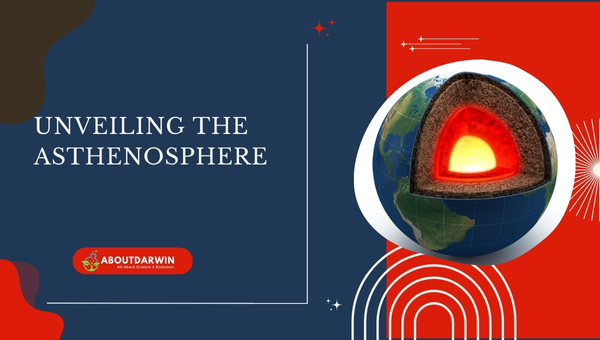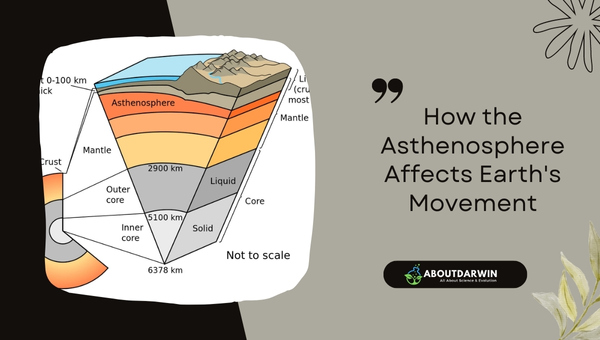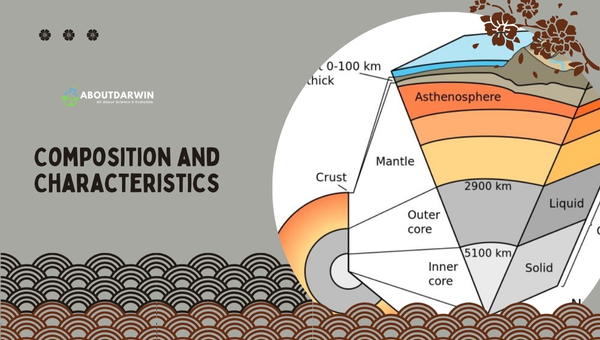Physical Address
304 North Cardinal St.
Dorchester Center, MA 02124
Diving into the depths of our planet’s structure, it’s crucial to understand the asthenosphere. A mantle layer beneath the Earth’s solid outer shell, the asthenosphere, plays a pivotal role in the movement of tectonic plates.
Composed mainly of solid rock, it behaves like a viscous fluid due to high pressure and temperature. Are you prepared to explore the mysteries of this underground layer? I’ll share 10 fascinating asthenosphere facts to help answer the question: What is the asthenosphere?
As we venture deeper into the asthenosphere, we’ll uncover the factors that make it unique and crucial to the Earth’s geological processes. From its consistency to its influence on tectonic plate movements, I’ll cover some essential facts you need to know. Get ready to explore this lesser-known yet critical component of the Earth’s structure!
Embarking on this journey will expand your understanding of the asthenosphere and provide insights into our planet’s recurring geological phenomena. By understanding this layer more deeply, we’ll be better equipped to comprehend the many geophysical processes that shape our world. So, let’s dive right into these 10 asthenosphere facts and see what lies beneath!
Contents
When diving into the depths of our planet, I find it fascinating to explore the various layers that makeup Earth’s structure. One of these intriguing layers, situated beneath the Earth’s crust, is called the asthenosphere. In this section, I’ll introduce you to astounding facts about the asthenosphere and unveil its mysteries.

The asthenosphere is a layer within the Earth’s upper mantle, sandwiched between the lithosphere and the lower mantle. What sets it apart from other layers is its semi-solid state. You see, this layer isn’t entirely solid or completely liquid. The asthenosphere behaves more like a viscous, slow-moving substance and plays a significant role in plate tectonics.
Now, in terms of depth, the asthenosphere is located approximately 80 to 200 kilometers below the Earth’s surface. It extends to a depth of about 670 kilometers.
Here’s a helpful table showing its range:
| Layer | Depth |
|---|---|
| Earth’s Surface | 0 km |
| Upper Asthenosphere Boundary | ~80-200 km |
| Lower Asthenosphere Boundary | ~670 km |
The temperature in the asthenosphere varies quite a bit. At its upper boundary, temperatures may be as low as 1300°C (2372°F), while at its lower boundary, temperatures can soar to a scorching 2200°C (3992°F). These high temperatures cause rock in the asthenosphere to partially melt, which explains its flowing nature.
The asthenosphere plays a crucial part in plate tectonics. The lithosphere above it consists of the Earth’s crust and the uppermost part of the upper mantle. This layer is split into several huge slabs called tectonic plates.
The semi-fluid asthenosphere lubricates their movement, allowing them to slide above it. This is the primary driving force behind the Earth’s various geological events, such as earthquakes and volcanic eruptions.
A glimpse into the significance of the asthenosphere:
Understanding the asthenosphere helps us comprehend the intricate processes beneath our feet. From its unique properties to its involvement in shaping the Earth’s landscape, this hidden layer is essential to our planet’s geology.
To understand the critical role of the asthenosphere in Earth’s movement, it’s crucial to grasp how it interacts with the lithosphere. The asthenosphere, located beneath the lithosphere, is known for its vicious, partially molten properties that enable the movement of tectonic plates above it.

The asthenosphere impacts Earth’s movement in several ways:
It’s essential to note that the asthenosphere’s effects are not limited to just Earth’s movement: it also plays a part in the formation and evolution of our planet’s surface. For instance:
Understanding the asthenosphere’s role in Earth’s movement offers valuable insights into various geological processes, natural disasters, and the formation of striking features on our planet’s surface. It further underscores the importance of this layer in shaping the world as we know it.
We all know that the Earth is composed of various layers, and one of these layers is the asthenosphere. But what exactly is it made of, and what are its characteristics? In this section, I’ll shed light on the composition and features of the asthenosphere.

The asthenosphere is a layer of the Earth’s mantle situated below the lithosphere, composed of the crust and the uppermost part of the mantle. This layer is predominantly solid but behaves semi-fluidly due to its higher temperature and pressure. The asthenosphere is primarily composed of a mixture of silicate minerals, and its depth ranges from approximately 80 to 200 kilometers (50 to 125 miles) below the Earth’s surface.
One of the most critical aspects of the asthenosphere is its role in the process of plate tectonics. The asthenosphere’s semi-fluid behavior allows the lithospheric plates to slide over it, enabling the movement of continents and the creation of earthquakes.
As for the temperature, the asthenosphere is much hotter than the lithosphere, with temperatures ranging between 1300 to 1400 degrees Celsius (2372 to 2552 degrees Fahrenheit). This significant temperature difference is due to the heat generated by radioactive decay and the heat from the Earth’s core. The pressure within the asthenosphere also increases with depth, contributing to its semi-fluid behavior.
To better understand the composition and characteristics of the asthenosphere, let’s examine some specific properties:
With this information, we now have a good understanding of the asthenosphere’s composition and characteristics. These aspects play a significant role in shaping the Earth’s surface through the movement of tectonic plates and the creation of various geological events.
Check 4 Steps of the Nitrogen Cycle: Importance, Impact
While not as widely known as the Earth’s crust or core, I find it fascinating that the asthenosphere plays a crucial role in our planet’s geology. Significant discoveries related to the asthenosphere have provided valuable insight into how our planet functions. It’s essential to take a closer look at some of these findings and understand the importance of this unique and intriguing layer.
One of the most noteworthy discoveries about the asthenosphere is its viscoelastic behavior. This means it behaves like a solid and a liquid, allowing the Earth’s tectonic plates to move and glide atop it. Recognizing this behavior was crucial in understanding plate tectonics’ mechanics and its various geological processes, such as earthquakes, volcanoes, and continental drift.
Researchers have also gained valuable knowledge about the asthenosphere’s composition. Primarily consisting of hot, partially molten rock, this layer witnesses temperatures between 1300°C and 1400°C. The intense heat and high pressure contribute to its distinctive properties, making it solid and liquid.
In recent years, there have been advancements in our understanding of the asthenosphere’s thickness and depth. Current estimates put the asthenosphere’s depth at approximately 80 to 200 kilometers below the Earth’s surface. This data helps geologists to create more accurate models of Earth’s internal structure and predict geological events with greater precision.
Moreover, the asthenosphere has gained more importance as a potential source of geothermal energy. This renewable form of energy production harnesses the heat from the Earth’s interior to generate electricity. The high temperatures in the asthenosphere represent significant untapped potential in this regard.
Lastly, discoveries surrounding the asthenosphere have had implications in the field of mineralogy. The intense heat and pressure within this layer facilitate the formation of unique minerals that cannot be found elsewhere on Earth. These minerals are essential for various industries and applications, highlighting the importance of studying the asthenosphere further.
The asthenosphere holds significant value in understanding our planet’s geology, supplying renewable energy, and providing unique minerals. Delving deeper into this remarkable layer of Earth continues to offer valuable insights and discoveries.
By now, I’ve covered much information about the asthenosphere, which should give you a better understanding of this Earth layer. It’s essential to review what we’ve learned, so let’s sum up the essential facts:
The asthenosphere has significant properties and roles in our planet’s geological processes. Some noteworthy points include the following:
Understanding the asthenosphere has significant implications in various scientific fields. These include earthquake predictions, oil drilling, and mineral explorations.
I hope this article has provided valuable insights into the fascinating characteristics of the asthenosphere. Explore resources that go deeper into the Earth’s structure and the many geological wonders hidden beneath our feet for further reading.